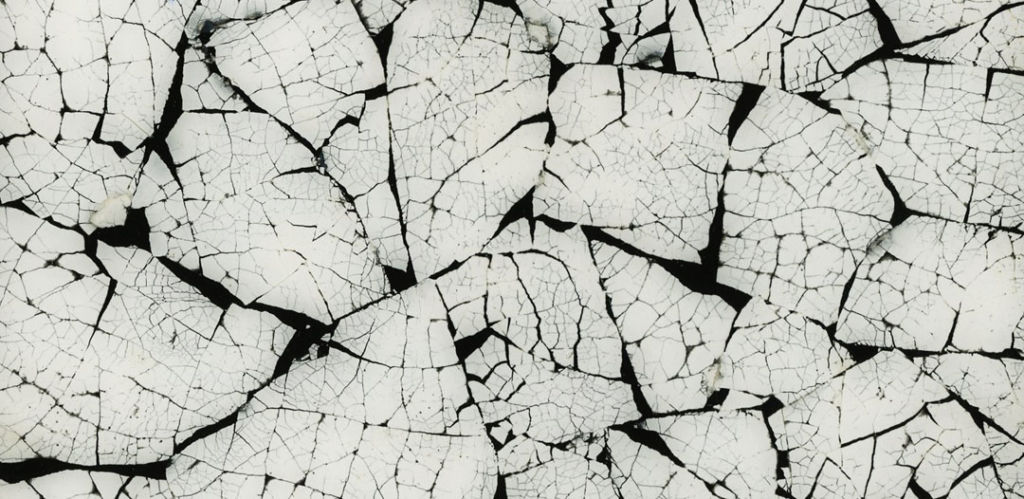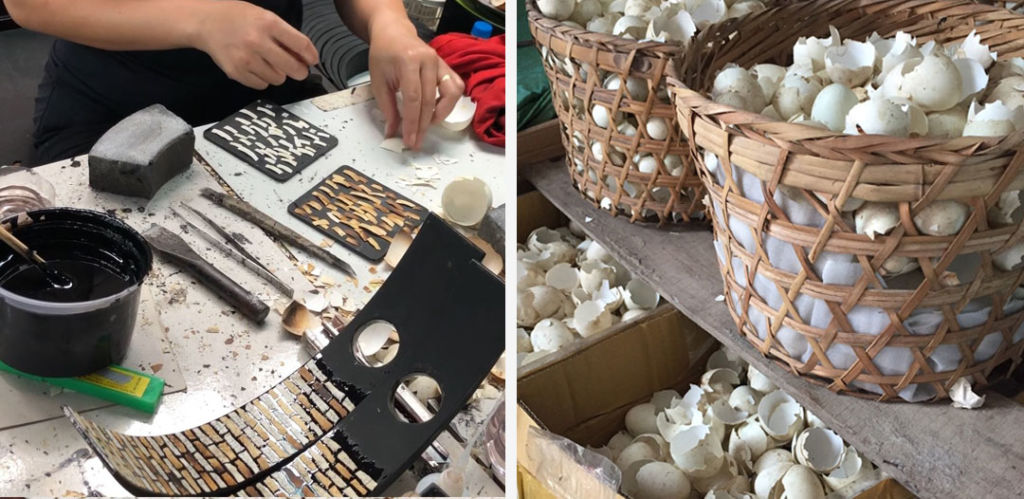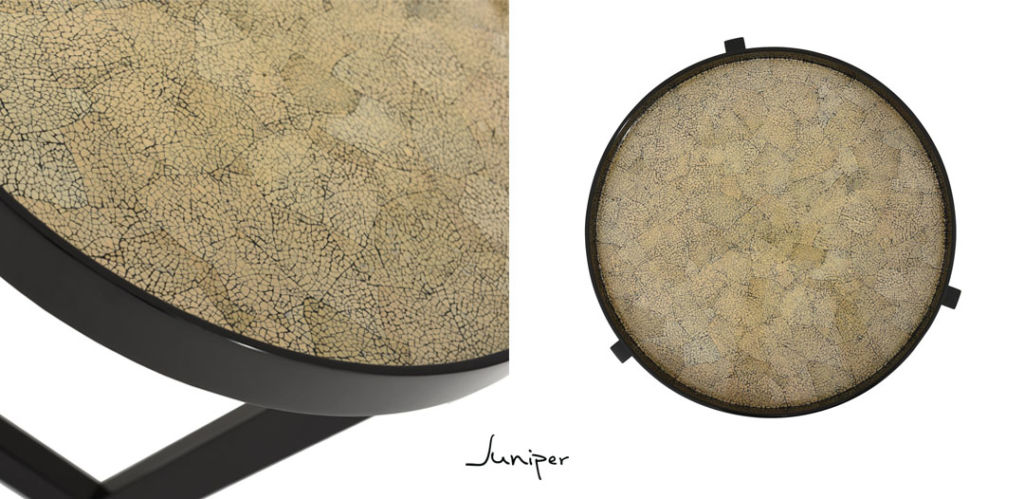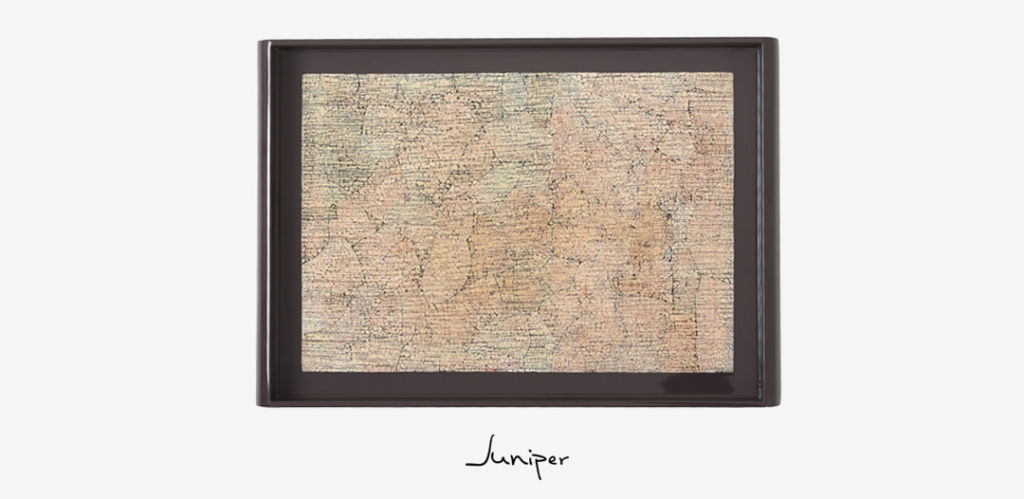Looking at an eggshell lacquer piece is like looking at a Picasso painting; your eyes get lost in a new detail each time you take a glance. Every piece is hand-made by skilled artisans who create their own stories and styles through these incredibly embellished eggshell pieces.
The technique of eggshell inlay was first invented in ancient Vietnam and later brought back into fashion during the Art Deco era in France. During its time, Art Deco represented all things glamorous, exuberant and luxurious, while supporting social and technological progression. Although the era boasted a plethora of various styles, it always incorporated rare and exquisite materials put together with care and high-quality craftsmanship.

In 1900, Japanese artist Seizo Sugawara set up a workshop in Paris after the Exposition Universelle to showcase Japan’s superiority in eggshell lacquer art. Sugawara met French metalsmith, Jean Dunand; through their exchange of technique, Dunand became one of the most influential artisans of the Art Deco era. He melded Oriental techniques with contemporary and abstract decorative designs, shown through his eggshell pieces which are collected by fine art connoisseurs and museums all over the world today.
While different factories and artists around the world put their own distinctive touches on it, the ancient inlay technique has generally stayed the same throughout time. Let’s briefly review the general process…
To create modern day eggshell lacquer, factories in the Binh Duong province of Vietnam typically use duck shells that they thoroughly wash and then dry in the sunlight.
Coloring
- Naturally colored eggshells (yellowish to darker brown tones) are pan-grilled over a charcoal fire for varying times based on the desired color of the shell.
- Sprayed color eggshell achieves its final color from a transparent colored varnish on the surface.

Application
- The surface is sprayed with a mixture of paint and glue to give the color of the lines between the eggshell pieces, then the shells are broken by hand into smaller pieces and applied to the surface with great attention on its effect on the overall design.
- Since the process is always done by hand, it calls for an extremely meticulous, patient and creative eye. Depending on the size of the item, up to three artisans could work on the same piece, which demonstrates how the pure attention to detail is unlike any other custom design process.
Lacquering
- Whether it’s natural versus colored lacquering, the eggshell is sprayed with several layers of clear coating (to fill gaps and obtain a smooth surface) with dry or water sanding in-between each layer. This lacquering process is what enhances the beauty of the delicate eggshell patterns.

The detailed, creative and strategic process creates fascinating works of art, like our sleek J72 side table for instance.
Whether it’s a tray, box or coffee table top, eggshell inlay is an incomparable craft that is sure to make any piece stand out. We think that this ancient Vietnamese technique will continue to influence the modern design world for ages to come…

_________________________________
ERIC BRAND
Founded in 1996 and based in San Francisco, Eric Brand offers custom-styled furniture and worldwide sourcing along with exquisite materials and finishes, specifically for the high-end residential design market and hospitality industry.
JUNIPER
Named after the fog-licked Juniper trees on the hills of San Francisco, Juniper is an in-stock furniture collection by Eric Brand that pays homage to timeless materials, techniques and silhouettes – brought to life through expert craftsmanship.